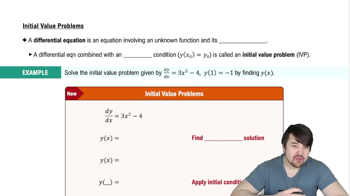Working with composite functions
Find possible choices for outer and inner functions ƒ and g such that the given function h equals ƒ o g.
h(x) = (x³ - 5)¹⁰
 Verified step by step guidance
Verified step by step guidance Verified video answer for a similar problem:
Verified video answer for a similar problem:



 5:56m
5:56mMaster Adding & Subtracting Functions with a bite sized video explanation from Patrick
Start learning